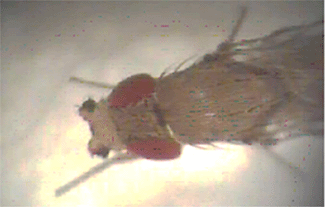Why are hybrids not symmetrical?

Most animal species come from the hypothetical Urbilateria, the first bilateral organism that presented a single plane of symmetry. This plane divides the body in two mirrored halves, right and left. For a given individual the genes that control the development of the repeated structures on each side of the body are obviously identical, but it is commonly observed that there are small deviations with respect to ideal symmetry: who hasn't bought a pair of shoes to find that one was tighter than the other? These deviations are the inevitable result of the so-called "development noise"', a notion that refers to the inherent stochastic variation in the molecular and cellular processes involved in the development of any morphological structure. Therefore, stable development is the ability of organisms to offset these variations and approximate towards the bilateral ideal: perfect symmetry.
In order to quantify the subtle deviations between the right-hand and the left-hand structures we use fluctuating asymmetry as a measurement, which is simply the difference between left and right and which we expect to be zero (the bilateral ideal). There are many publications that use this index, with surprising and sometimes extravagant results in some cases. For example, some authors claim that women have more orgasms when their partners are more symmetrical, or that the most demanding men prefer women with symmetrical breasts when looking for a partner. Some critics of these advise us to take a gauge or slide gauge the next time we go out on the pull.
Jokes apart, the reason why there is a break in bilateral symmetry raises a fascinating and difficult scientific question. A well-documented situation occurs when hybrids are produced from two distinct species, which has led to the conclusion that inter-species hybridisation increases bilateral asymmetry. This has usually been interpreted as a direct consequence of the fact that the genome of such hybrids is a combination of two different parental genomes that do not usually coexist in natural populations due to the barriers of isolation between distinct species and, hence, the mechanisms that stabilize the interferences due to development noise are disrupted.
The problem is that although it is easy to measure FA, it is more difficult to discover what is the underlying cause that increases bilateral asymmetry in each case. One of the most surprising recent findings is that, contrary to what was thought, bilateral symmetry is not the default final result of the development of bilateral organisms, but that there are genetic mechanisms directly involved in the control of bilateral symmetry. Therefore, it may be that it is not all development noise when we see a break with symmetry.
The pair of close species Drosophila madeirensis (endemic in Madeira) and D. subobscura can produce hybrids in the laboratory with relative ease, which enables the planning and undertaking of careful experimental designs which allow us to distinguish development noise from other possible causes involved in bilateral asymmetry in the case of inter-species hybrids.
When female D. madeirensis are crossed with male D. subobscura the hybrid females show a series of morphological anomalies and a loss of ideal bilateral symmetry. Hence, in the case of a given hybrid individual one of the wings may be considerably larger that the other, something which does not occur in individuals of the parental species. This observation coincides with several results obtained by crossing other species. What is remarkable is that this asymmetry is not the consequence of an inability of the hybrids to offset the interferences caused by development noise as the traditional explanation suggests, but may possibly be due to the fact the genetic divergence between the genomes of D. madeirensis and D. subobscura, species which separated approximately a million years ago or less, leads to a disjunction in the patterns of expression of several or many genes, which may compromise to a great extent the perfect development of the hybrids.
In other words, it is not that hybrids have a more unstable development (understood as a mechanism which offsets random interference), but that some of the genes involved in their symmetrical development may not work properly. If this is the case, we need to revise the conventional idea that development noise is the cause of an increase in bilateral asymmetry in hybrids between distinct species.
References
Article: Rego, C., M. Matos, M. Santos. "Symmetry breaking in interspecific Drosophila hybrids is not due to developmental noise. Evolution", 2006, 60:746-761.

